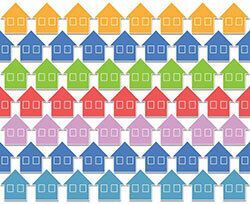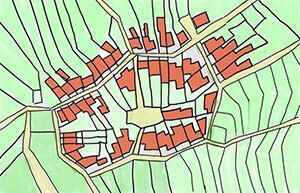Build a Compassionate Community
After reading the material below or even if you want to contact us right now about your interest in creating a compassionate community, click here and we promise to get back to you.
No single community in the world is a Compassionate Community in any abstract or formal sense, just as no community is devoid of compassion. Each community will find its own path to establishing compassion as a driving and motivating force, and each will conduct its own evaluation of what is “uncomfortable” in that community’s unique culture—that is, those issues that cause pain and suffering to members of the community. For one community that discomfort may be youth violence or an epidemic of teen suicide. Another community may discover that a portion of their community—perhaps immigrants, the homeless, or an LGBTQ group--has been marginalized, harassed, or even physically threatened. Yet in another community, Botswana for example, the major discomforts may have to do with the needs of large numbers of street children orphaned by the tragedy of the AIDS epidemic.
What does it mean to be a compassionate community?
A compassionate city is an uncomfortable city! A city that is uncomfortable when anyone is homeless or hungry. Uncomfortable if every child is not loved and given rich opportunities to grow and thrive. Uncomfortable when as a community we don’t treat our neighbors as we would wish to be treated.
~ Karen Armstrong, Founder of the global movement, The Charter for Compassion

How do you go about starting a compassionate community?
It all begins with a conversation. Most frequently with a group of like-minded people who are concerned about what is happening in their local community and in the world. During the conversation, you more than likely will get to a point of asking: “What can we do about this?”. When you start asking questions of this nature you’ve reached the starting point to begin a compassionate community initiative.
What are the steps to create a compassionate community?
- Review the Steps to Take that are listed on the Charter website. The outline offers a suggested process to follow.
- Contact the Charter for Compassion to set up a video conference call. This is an opportunity for your group to talk about your concerns, ask questions, and explore next steps.
- Register your initiative so that you’ll be on the Charter’s radar.
- Start working through the Steps to Take—remember to diversify your group to assure that different community perspectives are heard. In addition, you’ll want to let your community’s government structure know of your existence and see if there is someone from the local governing group who would like to join your group.
- Move towards identifying the issues on which your team may decide to work. Consult the Checklist; this list what other Charter communities are working on globally. The list outlines each issue and relates it to international documents.
- Check your issues against the United Nations Sustainable Development Goals.
- Utilize the Compassionate Community Toolbox to help you with your action plan.
- Check-in with the Charter’s City Coordinator on a regular basis to review progress and explore further next steps.
- Start to build local partnerships. See “Why is it important to build partners locally” Spread the word about the Charter for Compassion and get the local community to affirm the Charter.
- Review the program offerings of the Charter and see how they fit within your community action plan. Consult the “Education: Your Journey Starts Here” and “Fulfilling our Responsibilities to the Next Generation” for descriptions of offerings.

Does the Charter for Compassion offer more direct help to a community initiative?
The short answer is “yes.” We can come to you and offer help to get your initiative “off the ground.” Through conversation and planning it can be decided on how best we can help. In some cases, we might contribute to a community forum, offer a compassion training retreat, provide workshops that would complement issues that are being addressed through your action plan. Unfortunately, the Charter is not able to come without reimbursement for travel expenses. There would also be a nominal honorarium.
If coming to you is not possible, then we can be creative and see how much we can do through video conferencing. It isn’t the same as working in person, but “where there is a will there is a way"
Why is it important to build local partnerships?
It is a proven fact that compassionate community initiatives that have established local partners are most successful in advancing their goals. Currently the Charter is working with partners in twelve different sectors (i.e., arts, business, education, environment, healthcare, peace, religion/spirituality and interfaith (RISE), restorative justice, social services, social justice, science and research, gender relations). Registering local partners automatically means that they become international partners. Partners lend their expertise to your action plan as they would at the global level as well. It also means that you are broadening the ownership of the work that you are doing.

What Makes a Compassionate Community?
The Charter for Compassion is pleased to announce a new collaboration with the “What is the Meaning of Life” project and Nicolae Tanase, its founder, and Dr. Lesa Walker, founder of the Compassionate Austin movement. The Project is titled, “What makes a Compassionate City?” Would you be willing to contribute your thoughts to the Compassionate City Project?
The process is very simple. Write down your insight on the following questions:
- What makes a compassionate city/community?
- How do you personally measure compassion?
- What do you do to contribute to creating a more compassionate community and world? Where is compassion needed in your city? Where does it exist?
- If your city was one of compassion, what would that look like?
- What is your idea of a compassionate city?
Let us publish your ideas. Learn more about this project.
Graphic credits from top to bottom: @Khonkangrua8 | dreamstime.com, © Jozef Jankola | dreamstime.com, © Darknightsky | dreamstime.com


